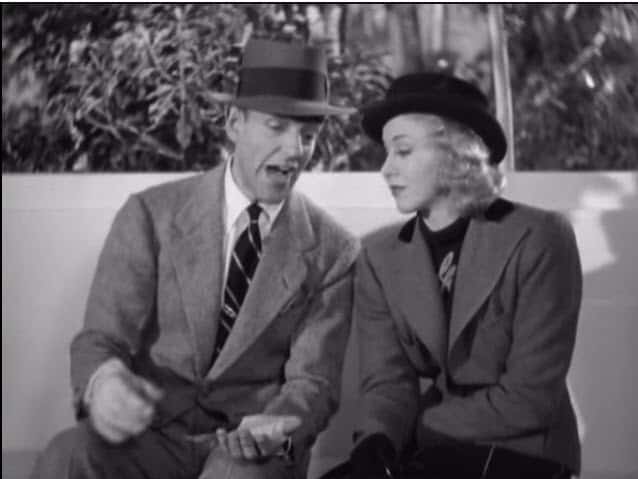Subscribers, Leads, MQLs, SQLs, Prospects, Opportunities, Customers: these terms get thrown around in B2B sales and marketing departments the world over but it’s almost like we’re speaking different languages.
Of course, the basic premise is that each term relates to how far through the sales process a non-customer is and what lead nurturing still needs to be done to turn them into a Customer.
The problem is their meanings overlap based on who you speak to and when you speak with them. What is a Lead and how it is different to a Prospect? When does a Subscriber turn into a Lead?
In this post we’ll clarify the differences between the terms and provide a simple, practical, working baseline that you can use to clearly define them in your business.
First a Little Background on the B2B Sales Process
Impulse buying is rare in the B2B sales process. Almost all purchases will be Considered Purchases because of the financial and business impact of making the wrong decision.
For considered purchases the following elements must to be in place before a sale will be made:
Need
The need for the purchase must be explicitly acknowledged by the prospect.
No matter how much you know or believe that “company x must have your widget y to succeed”, if they do not explicitly agree, you cannot make that sale.
Timing
The timing for the purchase must be now, or at least known.
Most (all) businesses have many more things they’d like to do than the time or money to complete it. Your purchase must be near the top of that priority list.
Note that these are two elements in the BANT qualification process (Budget, Authority, Need, Timing) and they are critical in moving a prospect from one stage to the next.
The Six B2B Sales Stages
The five stages in the B2B buying process are:
- Visitor
- Subscriber = Visitor + Contact Details + Permission to Contact.
- Lead = Subscriber + Potential Need
- Prospect = Lead + Acknowledged Need + Acknowledged Priority
- Opportunity = Prospect + Validated Pain Point + Demonstrated Interest + Confirmed Fit
- Customer = Opportunity + Commitment
Let’s look at each in more detail.
What is a Visitor?
A Visitor is someone you don’t yet know anything about.
‘Visitor’ is really a website specific term but you should consider a Visitor anyone your business comes into contact with where you don’t know their name or anything about them.
Here are some examples:
- Someone who arrives at your website but doesn’t leave their contact details.
- Someone who talks to you at a tradeshow booth but doesn’t give you their card
- Someone who calls your business and doesn’t leave their contact details
What is a Subscriber?
A subscriber is a Visitor whose name and contact details you know, and has consented to be contacted by you.
Your goal for Visitors is to turn them into Subscribers.
At this point, you don’t yet know if they are a good fit for your business. You just know they exist.
Consent laws are different all over the world. But in Australia, anyone who willingly gives you their contact details has also provided implicit consent to be contacted by you.
Examples of Subscribers are:
- Someone who has downloaded content from your website
- Someone who has provided their business card at a tradeshow – providing a business card is implicit consent to be contacted
What is a Lead? (also called a Marketing Qualified Lead or MQL)
A Lead is a Subscriber that could conceivably buy your products or services. That is, they are the right fit for your business, now or in the future.
In this list, Marketing Qualified Leads or MQLs, a term used by some CRM vendors, means the same thing as Leads. I think splitting them out is a needless complication.
Subscribers turn into Leads by, explicitly or implicitly, indicating they are a good fit for your company.
You can use several approaches to make this determination.
How to identify Leads
Leads Communicate In One Direction
At the Lead stage, communication is predominantly one-way. Your Leads:
- Receive your marketing emails
- View your social media content
- Download your content
- Learn about your solutions
This one-way communication pattern is natural because Leads are still in the education phase. They’re gathering information but haven’t yet acknowledged their need or timing for a solution.
Lead Scoring
This is where you score different elements of the Subscriber’s behaviour or demographics and convert them to Leads when they meet some threshold.
For example:
- Demographic: Their job title: “Student”, “CEO”, “Head of Sales, etc.
- Behaviour: What they have downloaded, etc.
Manual data review
Here you review the company or profile of the person (using LinkedIn or another data source) and confirm their firmographics or demographics match your buyer persona.
What to do with Leads
You goal for Leads is two fold
- Educate them about the problems they perhaps don’t know they have, which you can solve.
- Stay engaged so when they are ready to solve their problem, you’re present and easy to contact.
Lead nurturing is the best way achieve both of these tasks.
Lead Sources: Where Do Leads Come From?
Understanding where leads originate helps you better qualify and nurture them. Here are the main categories of lead sources in B2B:
Inbound Digital Sources
- Website form submissions
- Blog post comments and engagements
- Newsletter subscriptions
- Content downloads (whitepapers, ebooks, guides)
- Webinar registrations
- Free trial signups
- Contact form inquiries
Social Media Sources
- LinkedIn connections and engagements
- Social media post interactions (likes, comments, shares)
- Social media direct messages
- Professional group discussions
- Social media profile follows
Event-Based Sources
- Trade show contacts
- Conference attendees
- Webinar participants
- Industry meetup connections
- Professional workshop attendees
Referral Sources
- Customer referrals
- Partner recommendations
- Employee referrals
- Industry network introductions
- Professional association connections
Outbound Marketing Sources
- Cold email responses
- Cold call interactions
- Direct mail campaign responses
- Targeted advertising responses
- Sales prospecting replies
Research-Generated Sources
- Market research participants
- Industry survey respondents
- Focus group participants
- Beta program participants
Understanding the source of your leads is crucial because:
- Different sources typically indicate different levels of interest
- Source information helps prioritise lead nurturing efforts
- Certain sources tend to convert better than others
- Source data helps optimize your marketing budget allocation
- Different sources may require different qualification approaches
You can use this source information alongside lead scoring and manual review to better qualify your leads and determine when they’re ready to be considered Prospects.
What is a Prospect (also called a Sales Qualified Lead or SQL)
A Prospect is a Lead that:
(1) acknowledges they have a problem and
(2) wants to solve it now.
This acknowledgment of need and timing naturally shifts the communication pattern. Unlike Leads, Prospects engage in active two-way dialogue:
- They respond to your emails with specific questions
- They initiate conversations about their needs
- They request detailed information about solutions
- They actively participate in sales discussions
This transition from passive content consumption to active dialogue is often one of the first signs that your Lead qualification efforts are working. It’s also when you need to shift from automated marketing approaches to more personalized sales engagement.
The challenge here is to understand when they actively want to make a change that your products or services can deliver.
Again, you can make this determination in a couple of ways
- They view pages on your website that indicate they are ready to buy, e.g. pricing, about us, case studies, and other bottom of the funnel content pages.
- They take action by emailing or calling your business.
Your goal for Prospects is to further qualify them to confirm they have the budget and authority to make a purchase so you can create a Sales Opportunity.
What is an Opportunity (or Deal)?
What is an Opportunity (or Deal)?
An Opportunity is a specific business opportunity for which a Prospect has (or can get) an approved budget and is in the process of making a decision.
So a Prospect may have one or more Opportunities.
Think of it this way: while your Subscriber became a Lead by showing potential fit, and became a Prospect by acknowledging need and timing, an Opportunity emerges when all the practical elements for a purchase align.
Key Characteristics of an Opportunity
Remember those critical B2B sales process elements we discussed earlier – Need and Timing? An Opportunity takes these fundamental requirements and adds three essential characteristics:
1. Validated Pain Point
This goes beyond the general need acknowledgment we see at the Prospect stage. An Opportunity has:
- A clearly articulated problem that matches your solution
- Measurable business impact they want to address
- Enough “pain” to drive action within their specified timing
2. Demonstrated Interest in Solving the Pain Point
While Prospects acknowledge their need, Opportunities show active interest through:
- Requesting detailed product information
- Discussing specific implementation requirements
- Engaging in pricing and terms conversations
- Bringing other stakeholders into the discussion
This is when that two-way communication we saw developing at the Prospect stage becomes focused on specific solutions and next steps.
3. Confirmed Fit
Remember how we identified basic fit at the Lead stage? For an Opportunity, this fit must be confirmed at a deeper level:
- Organization size and type aligns with your ideal customer profile
- Budget availability or path to secure budget is clear
- Technical or operational compatibility is verified
- Implementation capability exists
- Timeline matches both parties’ expectations
Managing Opportunities
While a Prospect might stay a Prospect for some time, Opportunities require active management:
- Track each opportunity separately in your CRM
- Document all stakeholder interactions
- Maintain clear next steps and action items
- Regular review of opportunity pipeline
It’s important to note that unlike the progression from Subscriber to Lead to Prospect, an Opportunity can move backward or be lost entirely due to:
- Budget reprioritisation
- Change in stakeholders
- Shift in business priorities
- Competitive decisions
- Internal project delays
This is why tracking Opportunities separately from Prospects is crucial – it helps you maintain accurate sales forecasts and resource allocation.
Remember: Just as not every Lead becomes a Prospect, not every Prospect generates an Opportunity.
Your goal is to identify and nurture the Opportunities that have the highest potential to convert into Customers, the final stage in our B2B sales process.
What is a Customer
A Customer is an Opportunity who has made a commitment to proceed on a purchase.
There are some old school business managers, business owners that would say that a company is still a Prospect if they have unpaid invoices!
I’m a bit easier going, but in a B2B context, I would say someone is not a customer until they have made a definite commitment: signed the proposal or contract, provided their credit card, etc.
Verbal “go-aheads” are not enough and have a habit of falling through. I’ve even see signed agreements get delayed and never executed so you’ll need more than a verbal approval.






